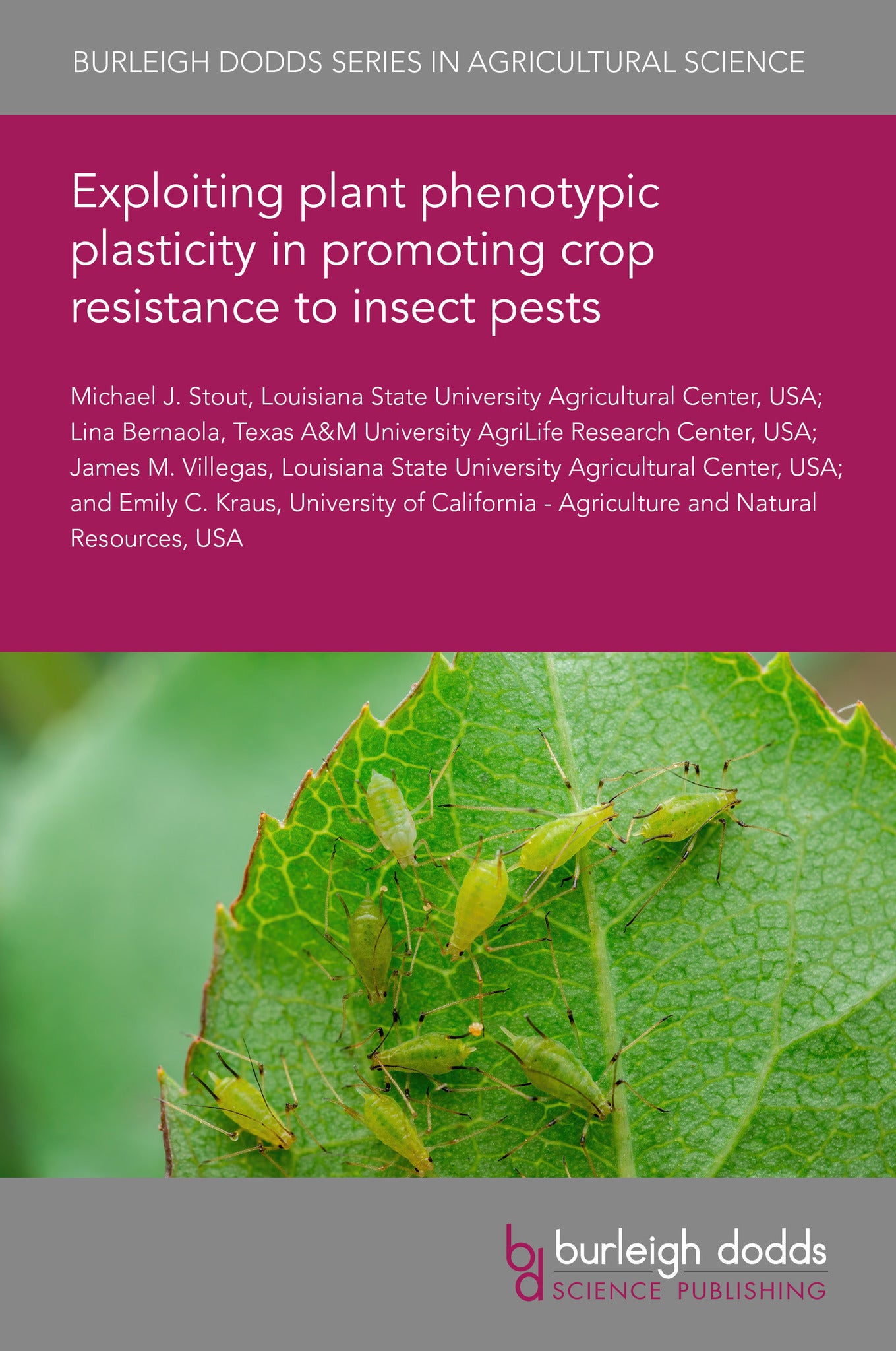We're sorry. An error has occurred
Please cancel or retry.
Exploiting plant phenotypic plasticity in promoting crop resistance to insect pests

Some error occured while loading the Quick View. Please close the Quick View and try reloading the page.
Couldn't load pickup availability
- Format:
-
03 April 2025

This chapter explores how an understanding of crop phenotypic plasticity might inform and improve pest management. In crops, plant-mediated interactions among herbivores and other organisms may have implications for pest management by, for example, altering thresholds or recommendations for scouting or management interventions; however, insufficient data exist to determine whether plant-mediated interactions are strong enough to warrant modifications to management practices. In addition, plasticity may enable stimulation of resistance in anticipation of herbivore attack through the application of substances that induce plant defense mechanisms, including chemical elicitors, soil microorganisms, and soil amendments. Greater understanding of the mechanisms by which these substances increase resistance and of the factors that influence their effectiveness will be needed to leverage phenotypic plasticity for improved pest management.

TECHNOLOGY & ENGINEERING / Pest Control, Pest control / plant diseases, TECHNOLOGY & ENGINEERING / Agriculture / Sustainable Agriculture, TECHNOLOGY & ENGINEERING / Agriculture / Agronomy / Crop Science, Agronomy and crop production, Sustainable agriculture

- 1 Introduction
- 2 Constitutive and inducible resistance traits
- 3 Relative importance of constitutive and inducible resistance in plants
- 4 Implications of phenotypic plasticity in crop plants for pest management practices
- 5 Exploiting phenotypic plasticity for pest management: use of plant elicitors to induce crop resistance to insect pests
- 6 Types of plant elicitor: jasmonates
- 7 Types of plant elicitor: salicylic acid and its analogs
- 8 Types of plant elicitor: aminobutyric acids and synthetic herbicides
- 9 Plant defense priming
- 10 Microorganisms as inducers of crop resistance to insects
- 11 Silicon soil amendments as inducers of crop resistance to insects
- 12 Conclusion and future trends
- 13 Where to look for further information
- 14 References



